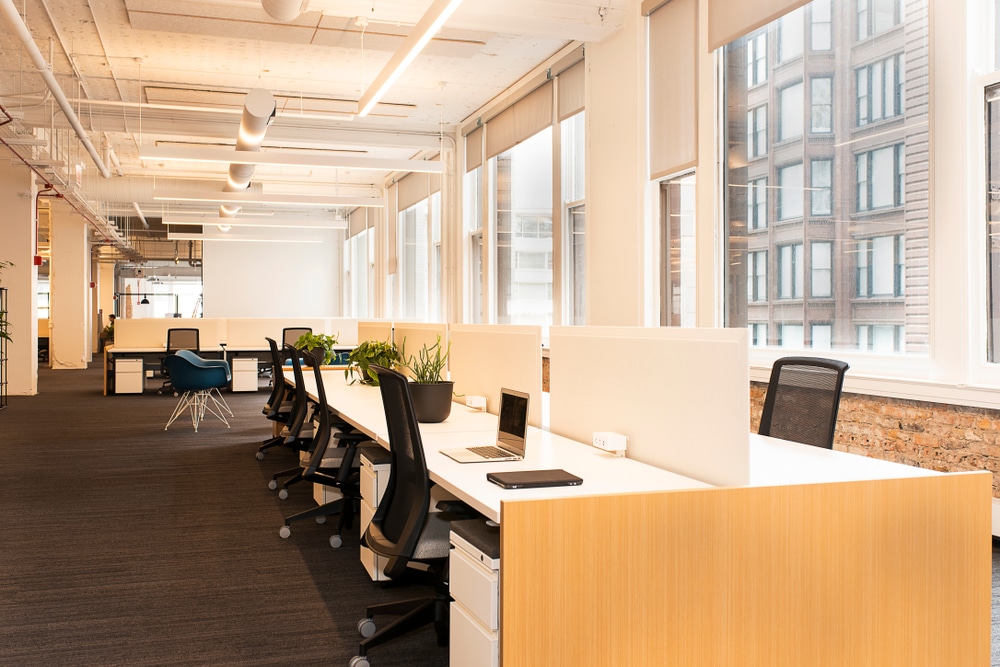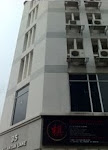A productive work environment is one that has a safe workstation. Smart companies aim to provide an ergonomically sound environment for all employees. Low productivity and, in the worst-case scenario, physical harm can result from poor ergonomic standards, which is plainly bad for your organization.
However, regardless of how effectively a company designs a workspace, it is the duty of each individual to ensure that their workstation is ergonomically sound. An employee who slouches or slumps uncomfortably at their work will not benefit from the most expensive chairs, desks or equipment in the world.
With that in mind, here are eleven tips and ideas for making your workstation more healthy, productive, and ergonomic.
Before that, let’s look into the significance of adjustable office desks and workstations for the employees.
First, What Comes Under the Umbrella of Workstation Furniture
Office workstation furniture is a broad category that encompasses all furnishings needed and implemented in a specific work space to encourage organization, safety, and productivity in industrial, commercial, and residential occupational contexts, such as seating, tables, and cabinets.
The purpose of each given work station is to establish a productive environment in which a worker can quickly access, use, and organize all of the equipment and supplies needed to execute a certain task.
In industries as diverse as automotive, metalworking, woodworking, electronics, medical, and food and chemical processing, practical, durable, and effective Singapore office furniture can be found in practically every office building, manufacturing facility, warehouse, clean room, hospital, and assembly line.
Most of these work stations include a wide flat desk-like surface on which to control equipment, assemble items, and write and review paperwork, depending on the activity at hand. Workstation furniture includes shelves, drawers, cabinets, and cubbies. Despite the fact that certain workstations are designed for standing operations and have no sitting, the majority of them contain a chair, stool, or bench.
Is there any difference between a desk and a workstation?
You’ll hear the terms “desk” and “workstation” a lot, and you might be unsure what the differences are. The good news is that there isn’t much of a difference between the two types of furniture, and you can generally use them interchangeably.
Top Tips for A Setting Up a Productive Workstation
Sitting at a desk for long periods of time can be taxing on your body. Repetitive tasks like typing or using a mouse can wreak havoc on your joints, leading to issues like carpal tunnel syndrome. Fortunately, you may take actions at your desk to ensure that you stay healthy throughout your employment.
The study of how people stay productive in their workplace is known as ergonomics. Setting up your chair, desk, and computer to keep your body in a healthy posture is a big part of it. Here are some suggestions:
Easy one-hand height adjustment mechanism
- Set your chair height so that when you type, your elbows bend at a 90-degree angle. Keep your mouse and keyboard as close together as possible so that you don’t have to extend.
- Orient your display so that the top is at eye level and it is 50 cm away.
- Sit up straight and take frequent breaks to stroll about.
1. Set the perfect lighting
To prevent eye strain and avoid craning your neck at an uncomfortable posture, ergonomics experts advocate appropriate lighting. Natural lighting at your workspace is ideal because it can improve your mood and energy while minimizing eye strain—daylight and access to outdoor vistas allow your eyes to relax and recover from the strain of staring at a computer screen all day.
If your home office doesn’t have windows, or if you’re working late or on cloudy days, combine overhead lighting with task lighting for the ideal lighting balance to help you focus.
2. Invest in a chair that is both comfy and supportive of your spine
Take a seat at your workstation. Is your lower and mid-back cushioned when your back is pressed against the backrest, or are there gaps between your spine and the chair? The greatest office chairs accommodate your back’s natural S-curve.
Bad chairs make you feel like you’re sitting on a log against a hard wall. You’ll require lumbar support if your chair doesn’t support your lower back.
3. Customize your space
Did you know that having a plant in your workplace might increase your productivity by up to 15%? Personalizing your space isn’t simply enjoyable; it may also improve your productivity and attitude.
So, create a space that reflects your personality and carefully select office colors. Green is the most aesthetically pleasing color, yellow encourages confidence, and blue stimulates concentration. Leaving your shades up and your curtains open while you work can also be uplifting and increase your concentration.
To stay energetic during the day, have a few motivating phrases or family photos in your desk. Make sure that everything you do to personalize your space fits your job and personal style.
4. A desk that is placed at the right height for you to use your keyboard
Your arms and wrists should be in a neutral position when typing on a keyboard at your desk: parallel to the floor or angled down toward your lap to reduce strain.
Typical workstations, on the other hand, are between 28 and 30 inches high, which is OK for those who are 5 feet 10 inches or taller, but not ideal for those who are shorter than that (the average adult) who like to keep their arms parallel to the ground.
Because there are so many moving parts, achieving the ideal ergonomic configuration might be difficult! Setting a workplace (containing your desk, chair, and monitor) at the optimal height for all five major office jobs is impossible (typing, mousing, reading documents, writing, and viewing your screen all require different heights). Because you can adjust the desk height in half-inch increments and switch between sitting and standing at regular intervals throughout the day, an adjustable-height standing desk is the best fit.
5. Choosing the right material for furniture
Material selection for office furniture Singapore is intimately tied to the intended usage of a work area, as applications that use or produce strong chemicals or sensitive materials, for example, must be made of nonreactive materials like titanium or stainless steel.
Extrusion, die-cutting, injection molding, and other similar procedures are used to create metal and plastic devices, while sawing and sanding are used to create wooden pieces.
6. Distractions should be kept to a minimum
This modular table is perfect for meetings, lectures, seminars, discussions, and work. Additionally, it has a space-saving foldable metal frame for easy storage on lockable castors.
Why Should You Buy It?
While it is impossible to eliminate all distractions when you are working in a packed space, there are techniques that can be used to assist reduce them. Investing in noise canceling headphones to shut out distracting sounds is one approach to limit distractions.
During work hours, you might also find it useful to turn off notifications on your phone. Knowing your tendencies and using them to your advantage is another method to reduce distractions. If you’re a morning person, for example, work on your difficult activities or projects around that time (when you’re most focused).
7. Placing the keyboard and mouse right
The keyboard should be close enough to your body so you may easily rest your elbows at your sides, avoiding shoulder strain. Your keyboard should also be low enough so that your arms are nearly parallel to the floor and your wrists are flat or bent downwards, as previously indicated.
Unfortunately, most keyboards are not designed with ergonomics in mind. They’re oriented such that the back of the keyboard is higher than the front, requiring us to bend our wrists to type on the keys.
Getting a keyboard stand or tray that places the keyboard pointing downwards is one solution. Comfortable wrist rests (which are really for your palms) and wrist rests for your mouse will also keep your wrists from curving up.
8. Positioning the monitor accurately
Your computer monitor should be set directly in front of you at arm’s length (about 18″). The screen’s top should be at or just below eye level. If you wear bifocals or progressive glasses, you’ll need to lower the monitor a few inches.
Finding a display height that allows you to maintain a neutral head and neck position rather than constantly tilting your head up or down, which causes neck strain and pain, is the key.
9. Don’t forget the laptop
The selection of non-frills furnishing for every office space should be your key objective. Different series is a unique work of Laptops force you to choose between having an appropriate monitor height and having a proper keyboard position. Use a docking station and an external keyboard and mouse with the positioning instructions for long-term laptop use (more than 1 hour).
To properly orient the laptop screen, use a laptop stand or monitor risers, or connect the laptop to an external monitor.
10. The surrounding environment
The total working environment is sometimes disregarded when addressing ergonomics. Lighting, temperature, humidity, and conveniences are all important ergonomic factors.
Because lighting should not generate glare on computer screens, many working settings should have softer lighting systems. The optimal lighting for computer displays is not always the same as the best lighting for reading printed materials.
Temperature control is more difficult because everyone’s preferences are different, but every effort should be taken to keep a temperature that is comfortable for as many individuals as possible. Colder temperatures should be avoided in order to avoid MSD injuries in particular.
11. Make the most of wall space
You may have a restricted quantity of desk or table space at your workstation. Work your way up rather than out to avoid running out of room and being overwhelmed. Above your table or desk, hang shelves, dry erase boards, hanging baskets, or pinboards. As a consequence, you’ll be able to see your goods better and stay more organized.
The Bottom Line
Taking the time to organize your workstation can have a variety of long-term benefits, ranging from making work easier to enhancing your attitude and productivity. Keeping your desk healthy, putting out your work, and bringing in a plant can all contribute to making your location the best it can be.







